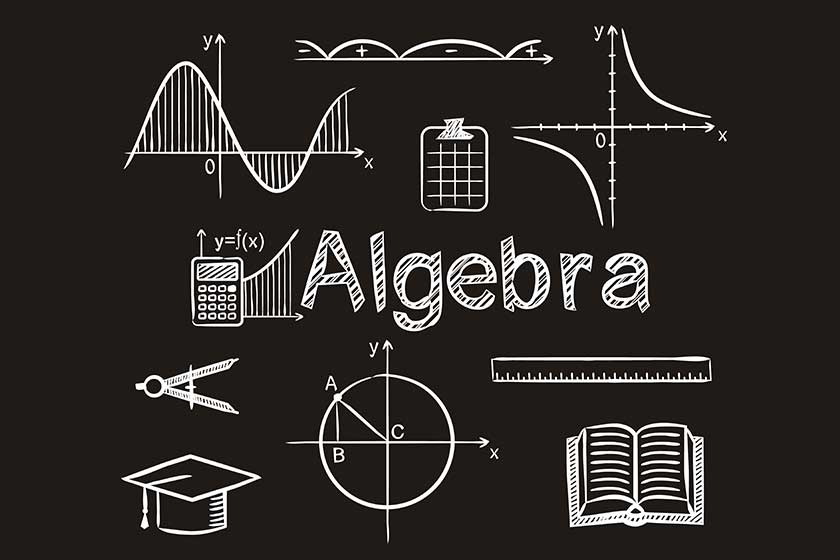
Equations form the backbone of algebra, helping us describe relationships between numbers and variables. Different types of equations in algebra serve unique purposes, ranging from simple computations to complex problem-solving scenarios. Types of equations in algebra include linear, quadratic, polynomial, exponential, logarithmic, and more. Each has distinct characteristics and applications, making them valuable tools in mathematics. Understanding their forms and properties allows learners to approach mathematical challenges with clarity and confidence, creating a foundation for advanced studies and real-world applications.
Understanding Linear Equations and Their Key Properties
Linear equations describe relationships between variables where the highest exponent is one. These equations form straight lines when plotted on a graph. Their standard form is ax+b=cax + b = cax+b=c, where aaa, bbb, and ccc are constants, and xxx represents the variable. Solutions to these equations include finding the value of xxx that satisfies the equation. Linear equations appear in daily situations like calculating costs or predicting trends, offering simple yet powerful mathematical solutions.
Key properties of linear equations include constant rates of change and proportional relationships between variables. Graphing these equations highlights their simplicity, as they create straight lines with predictable slopes and intercepts. Their applications span various fields, such as physics, economics, and engineering, making them a fundamental part of algebra.
Exploring Quadratic Equations and Their Standard Form
Quadratic equations represent relationships where the variable’s highest exponent is two. These equations take the form ax2+bx+c=0ax^2 + bx + c = 0ax2+bx+c=0, where aaa, bbb, and ccc are constants, and xxx is the variable. The solutions often involve two possible values for xxx, known as roots. These roots can be real or complex, depending on the discriminant (b2−4acb^2 – 4acb2−4ac).
The graph of a quadratic equation creates a parabola, which can open upward or downward based on the sign of aaa. These parabolas illustrate how quadratics model natural phenomena like projectile motion and optimization problems, making them a versatile tool in mathematics.
Differences Between Linear and Quadratic Equations
Linear and quadratic equations differ significantly in structure and representation. Linear equations, with their first-degree variables, form straight-line graphs, while quadratic equations create parabolas due to their second-degree variables. Linear equations have one solution, whereas quadratic equations typically have two, reflecting their more complex nature.
Applications of these equations also differ. Linear equations often solve straightforward problems involving constant rates of change, such as distance or cost calculations. Quadratic equations handle more dynamic scenarios like determining the peak height of a projectile or calculating maximum profit in business settings.
Systems of Linear Equations and Their Solutions
Systems of linear equations involve multiple linear equations that share variables. These systems aim to find common solutions where all equations intersect. Methods to solve these systems include graphing, substitution, and elimination. Graphing illustrates the intersection point visually, while algebraic methods provide precise numerical answers.
Solutions to systems of linear equations can be unique, infinite, or nonexistent. Unique solutions occur when lines intersect at one point, infinite solutions when lines overlap, and no solution when lines are parallel. These systems solve real-world problems like resource allocation and scheduling.
Polynomial Equations and Their Role in Algebra
Polynomial equations extend beyond linear and quadratic forms, incorporating variables with higher degrees. These equations take the general form anxn+an−1xn−1+…+a1x+a0=0a_nx^n + a_{n-1}x^{n-1} + \ldots + a_1x + a_0 = 0anxn+an−1xn−1+…+a1x+a0=0, where nnn is the degree, and ana_nan are coefficients. Higher-degree polynomials create more complex curves on graphs.
Applications of polynomial equations span physics, engineering, and economics. These equations model waveforms, optimize production processes and describe natural phenomena. Their flexibility in representing real-world problems makes them integral to advanced algebraic studies.
Exponential Equations and Their Unique Growth Patterns
Exponential equations involve variables in the exponent, such as ax=ba^x = bax=b. These equations model rapid growth or decay, often seen in population studies, finance, and science. Their solutions require logarithmic methods to isolate the variable in the exponent.
Graphs of exponential equations display consistent doubling or halving patterns, depending on the base value. This behavior highlights their use in scenarios like calculating compound interest, predicting viral spread, or analyzing radioactive decay.
Logarithmic Equations for Solving Exponential Problems
Logarithmic equations are the inverse of exponential equations, solving for the exponent in expressions like ax=ba^x = bax=b. These equations take the form loga(b)=x\log_a(b) = xloga(b)=x, where aaa is the base, bbb the argument, and xxx the exponent. Logarithmic methods simplify problems involving exponential growth or decay.
These equations apply in fields like computer science, where they optimize algorithms, and in physics, where they measure sound intensity. Their versatility stems from their ability to simplify otherwise complex calculations involving exponential relationships.
Rational Equations with Variables in Numerator and Denominator
Rational equations feature variables in both the numerator and denominator, such as p(x)q(x)=r\frac{p(x)}{q(x)} = rq(x)p(x)=r. Solving these equations often requires finding common denominators or factoring. Careful consideration ensures solutions do not include values making the denominator zero.
Applications of rational equations appear in science and engineering, particularly in rate problems and electrical circuits. Their ability to model proportional relationships with variables makes them valuable tools in applied mathematics.
Absolute Value Equations and Their Piecewise Nature
Absolute value equations use expressions like ∣x∣=a|x| = a∣x∣=a to measure distance from zero. These equations require considering positive and negative solutions, often leading to piecewise functions. Graphing highlights their distinct V-shaped patterns.
These equations appear in real-world contexts such as calculating distances, predicting market trends, or analyzing temperature variations. Their versatility lies in handling both positive and negative scenarios effectively.
Radical Equations Involving Square Roots and Radicals
Radical equations include variables under square root symbols, such as x+a=b\sqrt{x} + a = bx+a=b. Solving these equations involves isolating the radical and squaring both sides, requiring verification to avoid extraneous solutions.
Applications of radical equations occur in physics and geometry, particularly in distance and area problems. These equations demonstrate algebra’s capability to address problems involving roots and powers.
Piecewise Equations with Conditions for Different Outputs
Piecewise equations define functions with multiple expressions, each applying to specific conditions. These equations describe relationships that change behavior at certain points, such as f(x)=xf(x) = xf(x)=x for x>0x > 0x>0 and f(x)=−xf(x) = -xf(x)=−x for x<0x < 0x<0.
Applications range from tax calculations to signal processing, where conditions influence outcomes. These equations showcase algebra’s adaptability in modeling diverse scenarios.
Parametric Equations Defining Relationships Between Variables
Parametric equations express variables as functions of a parameter, such as x=f(t),y=g(t)x = f(t), y = g(t)x=f(t),y=g(t). These equations describe motion, curves, or relationships involving time or other parameters.
Uses include tracking projectile motion, designing curves in architecture, and modeling mechanical systems. Their ability to define multi-variable relationships makes them essential in advanced algebra.
Real-World Problems Represented by Algebraic Equations
Algebraic equations model real-world scenarios like budgeting, physics simulations, or population studies. Their applications translate abstract mathematics into practical problem-solving tools, bridging the gap between theory and reality.
Master Algebra with NFC Academy’s Middle and High School Online Programs
NFC Academy offers accredited online programs for Grades 6-8 that provide a robust foundation in algebra and advanced mathematical concepts. Tailored for middle school students, this program offers the flexibility of being taught by NFC Academy teachers or by parents at home. Algebra is introduced with engaging lessons that emphasize problem-solving, equations, and real-world applications, preparing students for high school and beyond.
In our high school online curriculum, students continue to build on their algebra skills, advancing to geometry, trigonometry, and beyond. With options like the NFC Academy Teacher Program or HomeSchool Plus, students receive personalized instruction designed to meet their learning needs. Whether you’re aiming for NCAA-approved courses or a streamlined homeschool experience, NFC Academy equips learners with the tools to excel in algebra and achieve academic success. Explore our programs today and take the next step in your child’s educational journey!



